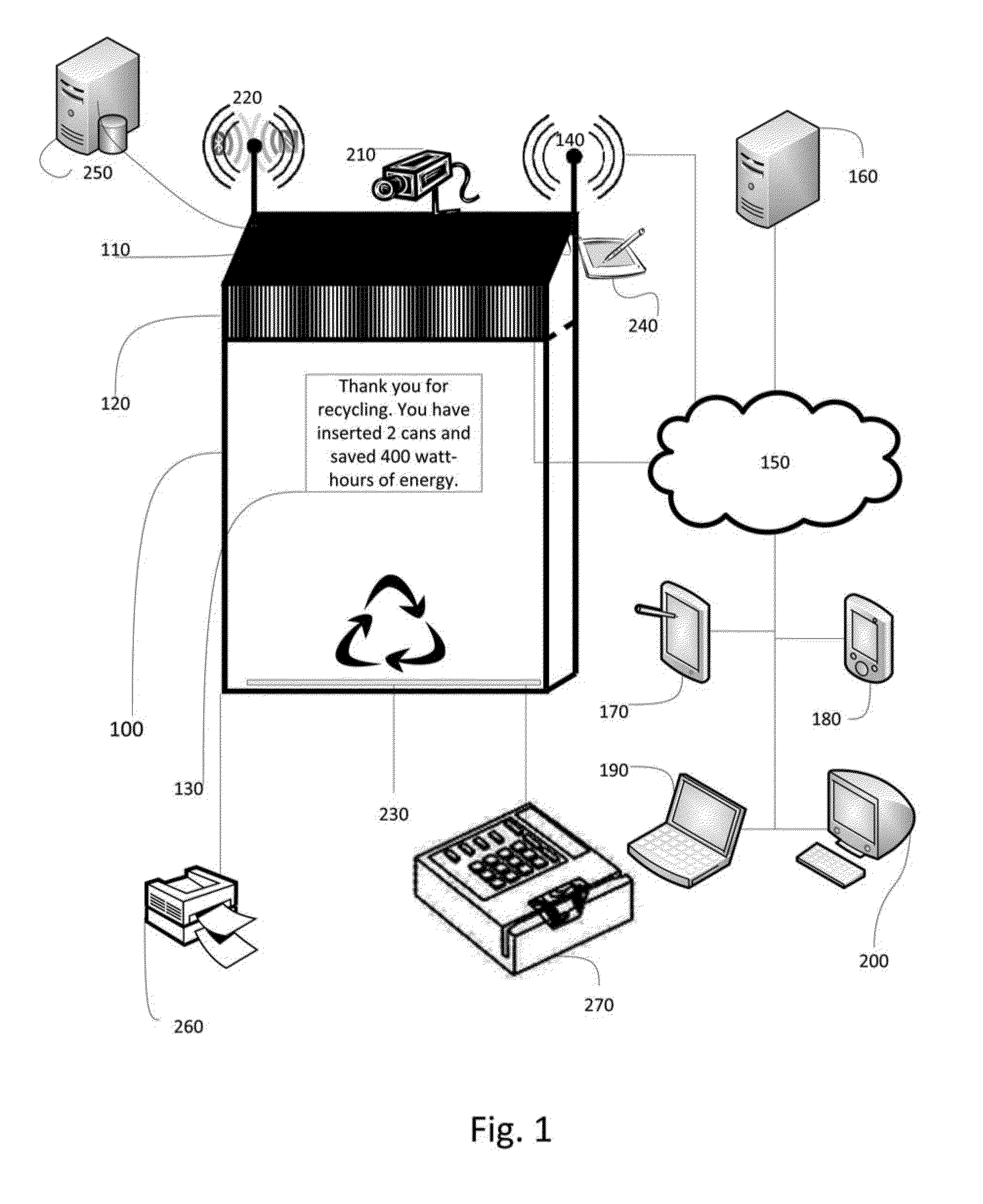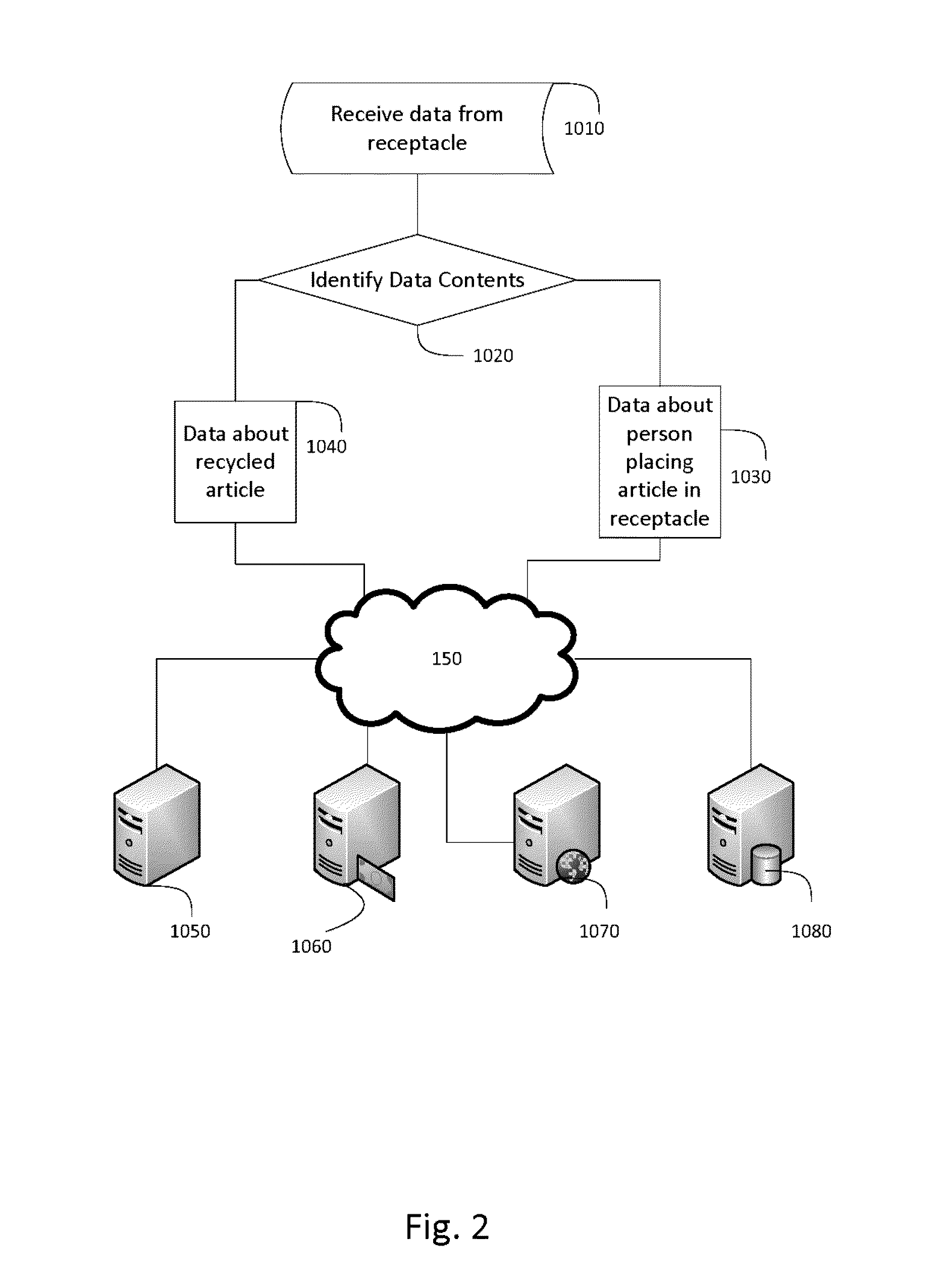Rates of recycling and other environmentally beneficial actions
a technology of environmental benefit and recycling rate, applied in the field of measuring environmental impact, can solve the problems of difficult to understand and appreciate the actual impact of each recycling act, difficult to improve the rate of recycling, and other environmentally beneficial actions such as reducing power consumption by turning off a light switch, etc., to achieve the effect of improving recycling ra
- Summary
- Abstract
- Description
- Claims
- Application Information
AI Technical Summary
Benefits of technology
Problems solved by technology
Method used
Image
Examples
Embodiment Construction
[0040]It is desirable, therefore, to provide a method, system and apparatus for improving to the rate of recycling and other environmentally beneficial acts. Among other things, these improvements solve a primary problem for the industry, improving rates of recycling and participation in other acts, such as environmentally beneficial acts.
[0041]The headings set forth below are merely to aid organization and readability of the disclosure, and do not limit the disclosed examples or concepts.
[0042]Processes performed by the machines, or system nodes described herein, or portions thereof, may be coded as machine readable instructions for performance by one or more programmable computers, and recorded on a computer-readable media. The described systems and processes merely exemplify various embodiments of enhanced features for use in the matter taught herein.
[0043]The examples given herein are all for the sake of illustration and shall not be considered limiting.
[0044]In teaching the mat...
PUM
 Login to View More
Login to View More Abstract
Description
Claims
Application Information
 Login to View More
Login to View More - R&D
- Intellectual Property
- Life Sciences
- Materials
- Tech Scout
- Unparalleled Data Quality
- Higher Quality Content
- 60% Fewer Hallucinations
Browse by: Latest US Patents, China's latest patents, Technical Efficacy Thesaurus, Application Domain, Technology Topic, Popular Technical Reports.
© 2025 PatSnap. All rights reserved.Legal|Privacy policy|Modern Slavery Act Transparency Statement|Sitemap|About US| Contact US: help@patsnap.com



